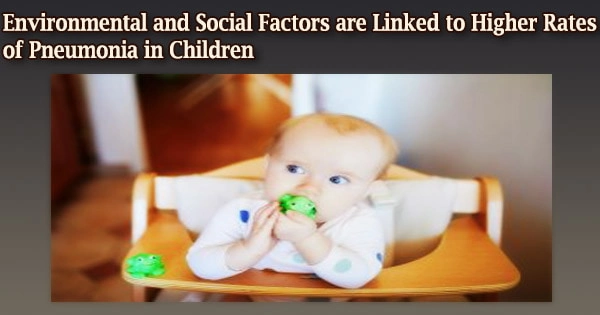Children exposed to a certain form of ambient air pollution are more likely to suffer community-acquired pneumonia, or CAP, and to be hospitalized for longer lengths of time, according to a new study headed by experts at Louisiana State University’s Superfund Research Program. Living in high-risk locations for CAP was linked to a variety of social characteristics, including race and socioeconomic level.
“This research contributes to the body of evidence linking poor respiratory health to exposure to environmental air pollution, especially combustion-derived particulate matter,” said study co-author Stephania Cormier, who leads the LSU Superfund Research Program.
Similar trends have been found in other respiratory disorders, such as asthma, according to research undertaken by LSU Superfund Research Program experts, and recent data reveal implications for COVID-19.
The researchers identified high- and low-risk locations for CAP in the Memphis metropolitan area using data from a Centers for Disease Control surveillance study of juvenile pneumonia and geographic information systems.
They gathered data on the child’s pneumonia, such as whether it was caused by a bacterial or viral illness, public versus private health insurance, age, race, and exposure to particulate matter pollution with a diameter of less than 2.5 micrometers, or PM2.5. Industrial combustion, car exhaust, and forest fires all send these tiny particles into the air.
Through incredible advances in technology, we have access to high-resolution satellite data that accurately capture environmental pollution information anywhere around the world. We were able to use this data to hone in on specific neighborhoods that are experiencing higher than average hospitalization rates for pediatric pneumonia to find out why.
Tonny J. Oyana
PM2.5 is one of the six air pollutants controlled by the Environmental Protection Agency, or EPA, and has been associated to an increased risk of respiratory infections as well as a variety of other health issues, including cardiovascular disease.
When looked at separately, race, insurance type, and PM2.5 exposure were all found to be significant risk factors for living in locations with higher-than-expected CAP.
The most significant predictor related with living in a high-risk location, however, was race. When compared to white children, Hispanic and non-Hispanic Black children in the Memphis metropolitan region were hospitalized at much greater rates for pneumonia.
Another key conclusion of this research is that the health risk linked with high PM2.5 levels occurred at levels lower than the EPA’s current regulatory limit standard.
“The fact that we saw increased risk for pediatric pneumonia at PM2.5 levels lower than what is currently allowed by the EPA is a concern and signals the need for continuous review and policy adjustment based on health effects evidence and exposure or risk information such as this,” Cormier said.
The World Health Organization (WHO) recently cut global maximum criteria for ambient particle matter to levels lower than the US Environmental Protection Agency’s existing maximum threshold.
This policy shift and new research are especially important in light of the global COVID-19 pandemic, which is caused by SARS-CoV-2, or severe acute respiratory syndrome coronavirus 2.
“COVID-19 also causes pneumonia, and our research suggests that PM2.5 may contribute to higher rates of infection and enhanced disease among those who do get sick,” Cormier said.
The researchers used satellite data to estimate PM2.5 concentrations, which is a unique feature of this study.
“Through incredible advances in technology, we have access to high-resolution satellite data that accurately capture environmental pollution information anywhere around the world. We were able to use this data to hone in on specific neighborhoods that are experiencing higher than average hospitalization rates for pediatric pneumonia to find out why,” said Tonny J. Oyana, lead author and professor in the Department of Preventive Medicine at the University of Tennessee Health Science Center and principal of the College of Computing and Information Sciences at Makerere University, Uganda.





